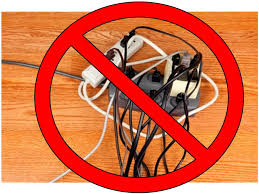Electrical Safety Precautions In The Workplace

Electrical safety precautions are critical to preventing serious injuries, fatalities, and property damage. In both the United States and Canada, electrical systems are heavily regulated to protect workers and the general public. Whether at home or in industrial, commercial, or institutional environments, understanding and applying proper safety practices around electricity is essential.
Request a Free Training Quotation
Why Electrical Hazards Must Be Taken Seriously
Electricity is silent, fast, and dangerous. Many people falsely assume that electrical hazards are rare or only occur during direct work with high-voltage equipment. In truth, even common situations—such as handling a damaged power cord, using wet equipment, or working near a downed power line—can turn deadly if proper precautions aren’t taken.
High-voltage incidents, arc flashes, and electric shocks continue to be among the leading causes of workplace injuries. In North America, regulatory bodies such as OSHA in the United States and provincial authorities in Canada have mandated safety standards for workplaces, requiring employers and workers to be proactive in preventing electrical injuries.
Downed Power Lines: One of the Deadliest Hazards
One of the most serious electrical hazards is a downed power line. If you encounter one:
- Never approach or touch the line, even if it appears inactive. Assume it is energized.
- Avoid touching anyone or anything in contact with the wire.
- Stay inside unless the car is on fire if you're in a vehicle that comes in contact with a line.
- If you must exit, jump clear with your feet together and move away from the vehicle by shuffling to avoid step potential.
Electricity seeks the path of least resistance to the ground, and the human body can act as a highly efficient conductor. That’s why even approaching a downed line too closely can result in a fatal current flow.
Flooded Areas and Electrical Equipment
Electrical equipment exposed to moisture during floods or heavy rain becomes extremely dangerous. For instance, walking into a flooded basement could expose you to energized appliances or submerged wiring. Always assume that water may carry current if electrical systems are involved. Restoration should only be done after trained professionals confirm power is disconnected.
Likewise, never attempt to use appliances or power tools that have been exposed to water. Even if dry on the surface, internal components may be damaged. Qualified technicians should test, clean, or replace such equipment.
Responsibility for Electrical Safety in the Workplace
In industrial, commercial, and institutional power systems, electrical safety precautions are a shared responsibility, but begin at the top:
- Employers must ensure that all electrical systems are properly installed and maintained. They are legally obligated to assess risks, train workers, and provide personal protective equipment (PPE). They must also comply with national safety codes such as NFPA 70E in the United States or CSA Z462 in Canada, which offer frameworks for arc flash hazard analysis, safe work practices, and proper documentation.
- Supervisors and facility managers are responsible for overseeing day-to-day compliance. This includes verifying lockout/tagout procedures, scheduling regular equipment inspections, and ensuring that only qualified personnel access energized equipment.
- Workers must follow safety procedures, report hazards, wear required PPE, and never take shortcuts. Awareness of voltage levels, energy sources, and grounding requirements is essential for every employee exposed to electrical systems.
- Authorities and Inspectors in both countries enforce standards, conduct inspections, and investigate violations. Compliance with these regulations is not only about avoiding penalties—it’s about saving lives.
Avoiding Common Electrical Mistakes
While large-scale hazards attract more attention, everyday situations also require vigilance. Here are some examples:
- Using extension cords as permanent wiring is a widespread but dangerous habit. They can overheat, especially when overloaded or run under rugs or furniture.
- Understanding the Limited Approach Boundary is part of basic precautionary training for energized work.
- Ignoring damaged outlets or cords can result in shock or fire. Replace any device showing signs of burning, fraying, or exposed wire.
- Following structured Electrical Safety Procedures In The Workplace is critical to ensuring all precautions are in place.
Improper grounding remains one of the most overlooked yet crucial safety measures. Without a proper ground, fault current can energize equipment enclosures or structures, posing severe shock risks.
Training is the First Line of Defense
The foundation of effective electrical safety is proper training. This includes hazard recognition, understanding how electricity works, knowing how to respond to emergencies, and the ability to apply lockout/tagout procedures. In both Canada and the U.S., specific training standards apply to workers based on job role and exposure level.
Electrical safety precautions are not optional—they are vital to the health and safety of everyone exposed to electrical systems. Whether in a high-voltage industrial facility or a residential setting, the principles remain the same: respect electricity, follow established guidelines, and never assume a system is safe unless it has been verified. In both the U.S. and Canada, regulations, training programs, and shared responsibility help create safer environments. But ultimately, it’s awareness and preparedness that prevent tragedy.
Arc Flash Group Training

We can present this Course to your electrical engineering and maintenance staff, on your premises, tailored to your specific equipment and requirements. We are ready to help design this program for you. Click on the link below to request a FREE quotation.
Live Online Electrical Training Schedule
October 2025
- Grounding and Bonding Training And The CE Code
- Combined CSA Z462 LV & HV Electrical Safety Training
- Arc Flash Training - CSA Z462 Electrical Safety
- High Voltage Safety Training
- NFPA 70e Training
- Substation Maintenance Training
November 2025
- Power Transformer Maintenance Training
- NFPA 70b Training - Electrical Maintenance
- Emergency Generators & Standby Power Systems
- 2024 CE Code - Changes and Fundamentals
- 2024 CE Code - Combined Course: Changes/Fundamentals and Calculations
- Lightning Protection Systems Training For Utility, Industrial, Commercial & Institutional power systems
